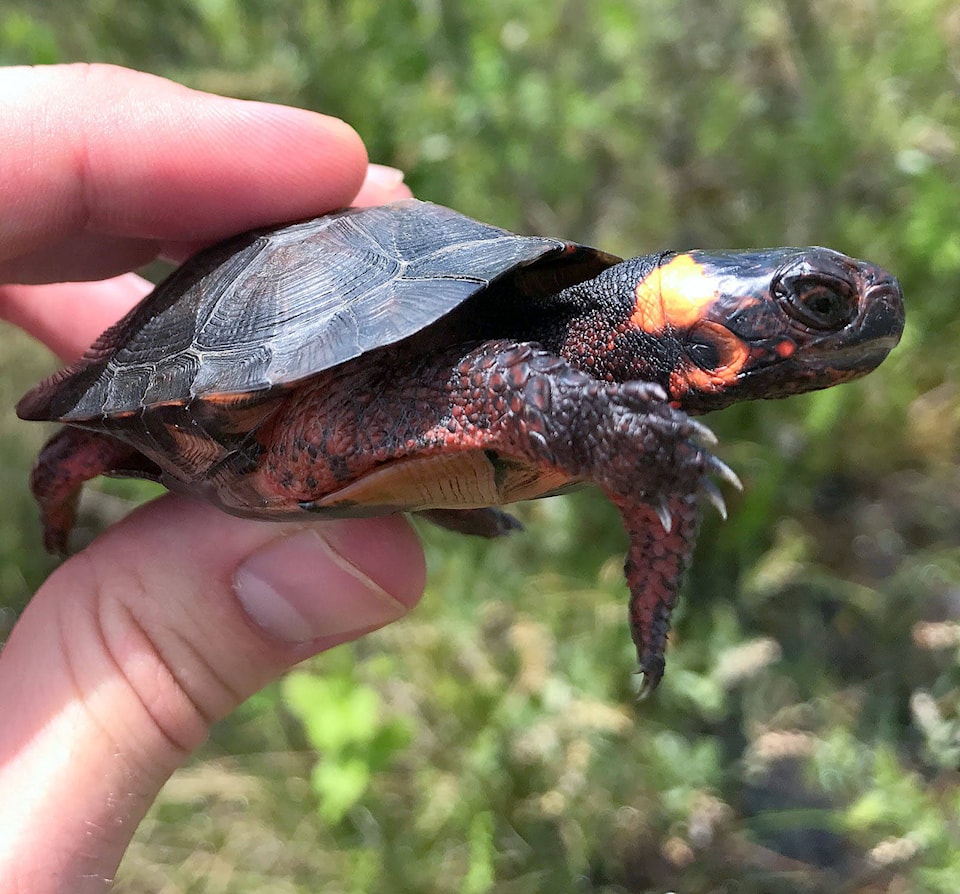Elementary school students in Princeton, New Jersey, developed “turtle madness” almost two years ago after learning that other states had official reptiles, but theirs didn’t. They decided that New Jersey needed one, and did considerable research on the state’s native reptiles. After a vote, they proposed that the bog turtle be given the honour.
“It’s the smallest turtle in North America, the most endangered and just adorable.” said science teacher Mark Eastburn. Eastburn’s students at Riverside Elementary School collaborated on the project with students at Community Park Elementary and their librarian, Bevan Jones.
“It started out as just a little science project to save a few turtles, but it turned out to be a lot greater when politics got involved,” said Marc-Andre Morel, 11, who attended Riverside but is now a middle-schooler.
The students had to convince the state legislature that New Jersey needed a state reptile and should choose its candidate.
Former classmate Connor Hewitt, then 11, studied how to get a bill through the legislature, or “the stages and how it gets voted in or out.”
They found lawmakers to sponsor bills in the state Senate and General Assembly. But the kids also had to persuade other lawmakers to support their cause. The kids testified, or provided evidence, last spring in front of two committees. Marc-Andre, dressed in a button-down shirt and tie, was one of several students to speak at the assembly hearing.
“I believe that the bog turtle should be recognized as the state reptile,” he said confidently.
The committees pushed the bill forward, and both houses voted in favour of the tiny reptile.
“Thanks to a dedicated group of elementary school students, teachers and lawmakers, we can help shine a light on bog turtles - once a thriving species in New Jersey, now on the verge of extinction,” New Jersey Gov. Phil Murphy tweeted after signing the bill into law a few weeks later.
Their effort makes the reptile one of the newest state symbols (others include trees, insects, songs and fossils), usually things a state is known for, proud of, or produces. But it’s not the first time that young students have taken an idea for a state symbol to lawmakers and won.
In 1983, thousands of Montana students, after reviewing 74 animals native to that state, voted to make the grizzly bear the state animal. In 2013, New York fourth-graders made a video in support of yogurt as the state snack. In 2016, Aiden Coleman, 11, of Williamsburg, proposed making the eastern garter snake Virginia’s state reptile.
And in 2014, when fourth-grader Peter Herrick realized the nation’s capital didn’t have an official rock, he organized the “D.C. Rocks, So We Need One,” project to select Potomac bluestone, a rock used in the foundations of the White House, Capitol, Washington Monument and other city buildings.
These efforts were all successful because in each case, students researched why their proposed symbol was important to their state, wrote proposals defending their choice, gathered support and made presentations to their state representatives. And they were patient, because getting a bill through the legislative process can take a year or longer. In Indiana, it took four years for Say’s firefly to become the state insect, after a second-grader proposed it in 2014.
In 2008, Maryland was the first to designate a state exercise: walking. In 2014, students in St. Joseph, Missouri, successfully lobbied for jumping jacks to be that state’s official exercise.
Different states may share a common symbol because it’s important to each. For example, Maryland and Virginia are among at least 20 states honouring milk as their state beverage, square dance as their official folk dance and butterflies as their state insects.
Not all efforts succeed.
When the Salamander Savers 4-H Club of Fairfax, Virginia, faced opposition to its effort to have the rare Shenandoah salamander declared the state amphibian, its members didn’t give up. After more research, they returned with a different proposal in a new category. On March 9, Gov. Ralph Northam supported the new effort, signing the bill declaring the more common red salamander as the state salamander. (There’s still no state amphibian.)
Peter Herrick, the D.C. Rocks promoter who’s now 14, urges other kids to follow suit. “If you have an idea and feel you can do something, take action.”
—-
TAKE ACTION
Students suggest what to do when proposing a state symbol.
1. Research your choice’s history and importance.
2. Gather support by contacting other schools and community organizations. Set up a Web page to make your case. Make a video. Mail postcards.
3. Make a presentation to your state representatives and ask them to sponsor a bill in the legislature.
4. Notify local newspapers about your project.
5. Follow the bill’s progress through your state government and be available to answer questions.
By Ann Cameron Siegel/Special to The Washington Post
